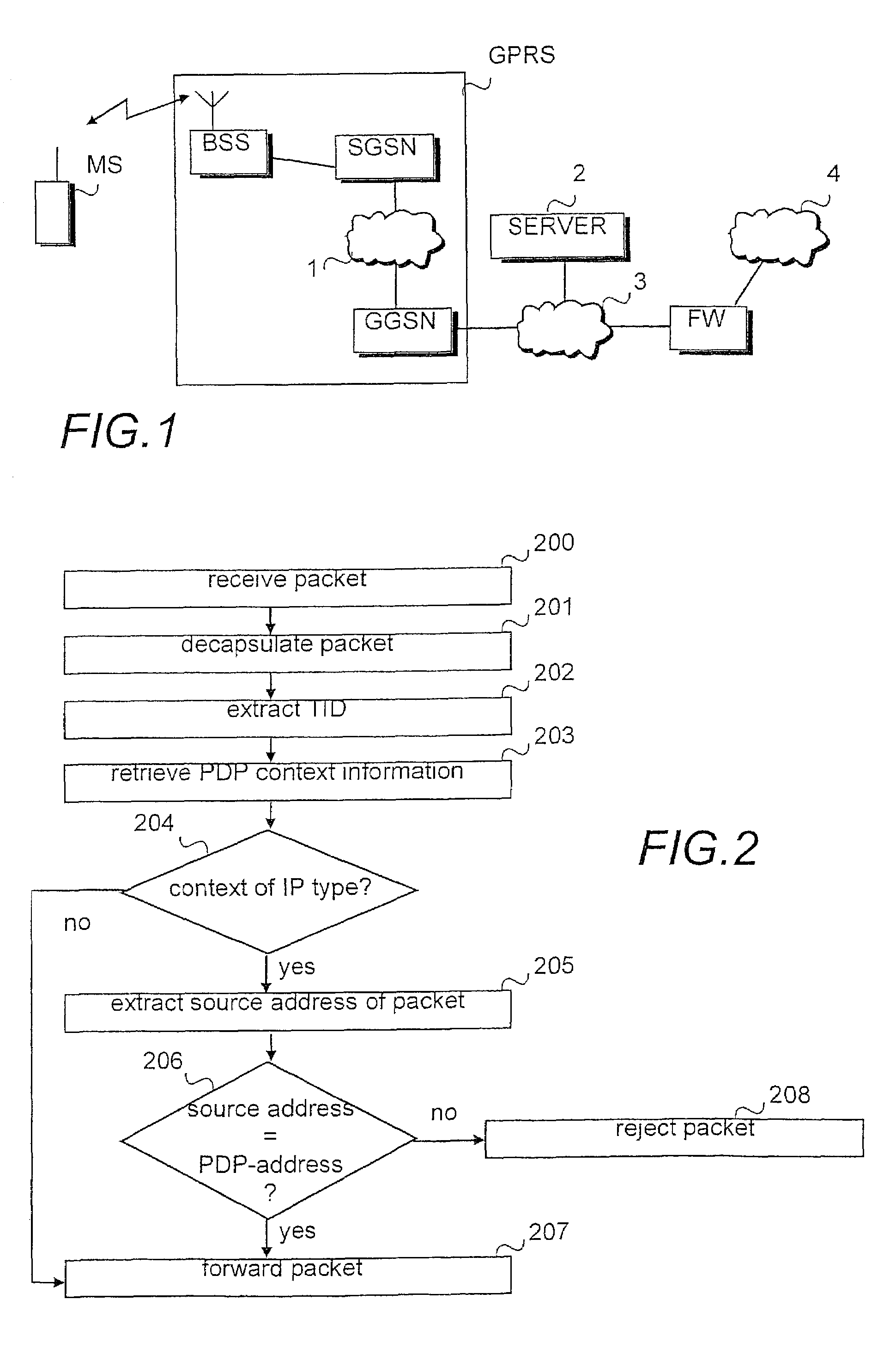Prevention of spoofing in telecommunications systems
a technology of telecommunications systems and spoofing, applied in the field of telecommunications system spoofing prevention, can solve the problems of increasing the delay in the network, wasting limited resources, and unable to verify the source address of the ip packet, so as to facilitate the implementation of chargeable services, and minimize the delay
- Summary
- Abstract
- Description
- Claims
- Application Information
AI Technical Summary
Benefits of technology
Problems solved by technology
Method used
Image
Examples
Embodiment Construction
[0020]The present invention is applicable to any packet switched system in which an individual packet data address is activated as in the GPRS system before it can be used and in the network infrastructure of which information is maintained on the user's active packet data address. These systems include the ‘third-generation mobile communication systems’, such as the Universal Mobile Telecommunications System (UMTS) and IMT-2000 (International Mobile Telecommunications 2000), mobile communication systems corresponding to the GSM system, such as the DCS 1800 (Digital Cellular System for 188 MHz) and PCS (Personal Communication System), and WLL systems which are based on the above-mentioned systems and implement a GPRS-type packet radio. Furthermore, the invention can be applied in systems other than mobile communication systems, such as cable modem networks and similar fixed systems. The invention will be described in the following using the GPRS service of the GSM system as an examp...
PUM
 Login to View More
Login to View More Abstract
Description
Claims
Application Information
 Login to View More
Login to View More - R&D
- Intellectual Property
- Life Sciences
- Materials
- Tech Scout
- Unparalleled Data Quality
- Higher Quality Content
- 60% Fewer Hallucinations
Browse by: Latest US Patents, China's latest patents, Technical Efficacy Thesaurus, Application Domain, Technology Topic, Popular Technical Reports.
© 2025 PatSnap. All rights reserved.Legal|Privacy policy|Modern Slavery Act Transparency Statement|Sitemap|About US| Contact US: help@patsnap.com


